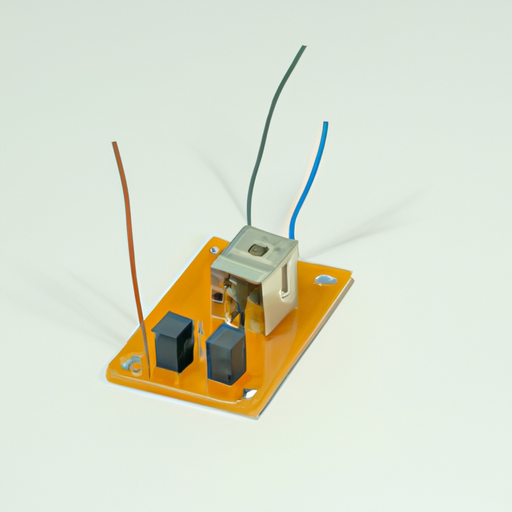Title: Exploring the Mainstream Models of Solid State Relays

1. Zero Voltage Turn-On (ZVT) SSRs (200 words) Zero Voltage Turn-On (ZVT) SSRs are widely used in applications where minimizing electrical noise and voltage spikes is crucial. These SSRs are designed to switch the load when the AC voltage crosses zero, reducing the chances of electrical disturbances. ZVT SSRs are commonly employed in industries such as medical equipment, audio systems, and industrial automation.
2. Random Turn-On (RTO) SSRs (200 words) Random Turn-On (RTO) SSRs are known for their ability to switch the load at any point in the AC voltage waveform. This feature makes them suitable for applications that require precise control over the switching time. RTO SSRs find applications in areas such as robotics, HVAC systems, and lighting control.
3. Instantaneous Turn-On (ITO) SSRs (200 words) Instantaneous Turn-On (ITO) SSRs are designed to switch the load as soon as the control signal is applied. These SSRs offer extremely fast response times, making them ideal for applications that demand quick switching, such as motor control, power supplies, and high-frequency switching circuits.
4. Analog Input SSRs (200 words) Analog Input SSRs are specifically designed to handle analog control signals, making them suitable for applications that require precise voltage or current regulation. These SSRs are commonly used in industries such as process control, temperature regulation, and scientific instrumentation.
5. Three-Phase SSRs (200 words) Three-Phase SSRs are designed to handle three-phase AC power systems, making them essential for applications that require control over multiple phases simultaneously. These SSRs find applications in industries such as industrial machinery, motor control, and power distribution.
6. Optically Isolated SSRs (200 words) Optically Isolated SSRs provide electrical isolation between the control and load circuits, ensuring enhanced safety and protection against voltage spikes. These SSRs are commonly used in applications where high-voltage isolation is required, such as in medical equipment, telecommunications, and power grid systems.
Conclusion (100 words) Solid state relays have revolutionized the field of electrical switching, offering numerous advantages over traditional electromechanical relays. The mainstream models of SSRs, including Zero Voltage Turn-On (ZVT), Random Turn-On (RTO), Instantaneous Turn-On (ITO), Analog Input, Three-Phase, and Optically Isolated SSRs, cater to a wide range of applications across various industries. By understanding the features and benefits of each model, engineers and designers can select the most suitable SSR for their specific requirements, ensuring efficient and reliable operation.
Title: Exploring the Mainstream Models of Solid State Relays

1. Zero Voltage Turn-On (ZVT) SSRs (200 words) Zero Voltage Turn-On (ZVT) SSRs are widely used in applications where minimizing electrical noise and voltage spikes is crucial. These SSRs are designed to switch the load when the AC voltage crosses zero, reducing the chances of electrical disturbances. ZVT SSRs are commonly employed in industries such as medical equipment, audio systems, and industrial automation.
2. Random Turn-On (RTO) SSRs (200 words) Random Turn-On (RTO) SSRs are known for their ability to switch the load at any point in the AC voltage waveform. This feature makes them suitable for applications that require precise control over the switching time. RTO SSRs find applications in areas such as robotics, HVAC systems, and lighting control.
3. Instantaneous Turn-On (ITO) SSRs (200 words) Instantaneous Turn-On (ITO) SSRs are designed to switch the load as soon as the control signal is applied. These SSRs offer extremely fast response times, making them ideal for applications that demand quick switching, such as motor control, power supplies, and high-frequency switching circuits.
4. Analog Input SSRs (200 words) Analog Input SSRs are specifically designed to handle analog control signals, making them suitable for applications that require precise voltage or current regulation. These SSRs are commonly used in industries such as process control, temperature regulation, and scientific instrumentation.
5. Three-Phase SSRs (200 words) Three-Phase SSRs are designed to handle three-phase AC power systems, making them essential for applications that require control over multiple phases simultaneously. These SSRs find applications in industries such as industrial machinery, motor control, and power distribution.
6. Optically Isolated SSRs (200 words) Optically Isolated SSRs provide electrical isolation between the control and load circuits, ensuring enhanced safety and protection against voltage spikes. These SSRs are commonly used in applications where high-voltage isolation is required, such as in medical equipment, telecommunications, and power grid systems.
Conclusion (100 words) Solid state relays have revolutionized the field of electrical switching, offering numerous advantages over traditional electromechanical relays. The mainstream models of SSRs, including Zero Voltage Turn-On (ZVT), Random Turn-On (RTO), Instantaneous Turn-On (ITO), Analog Input, Three-Phase, and Optically Isolated SSRs, cater to a wide range of applications across various industries. By understanding the features and benefits of each model, engineers and designers can select the most suitable SSR for their specific requirements, ensuring efficient and reliable operation.